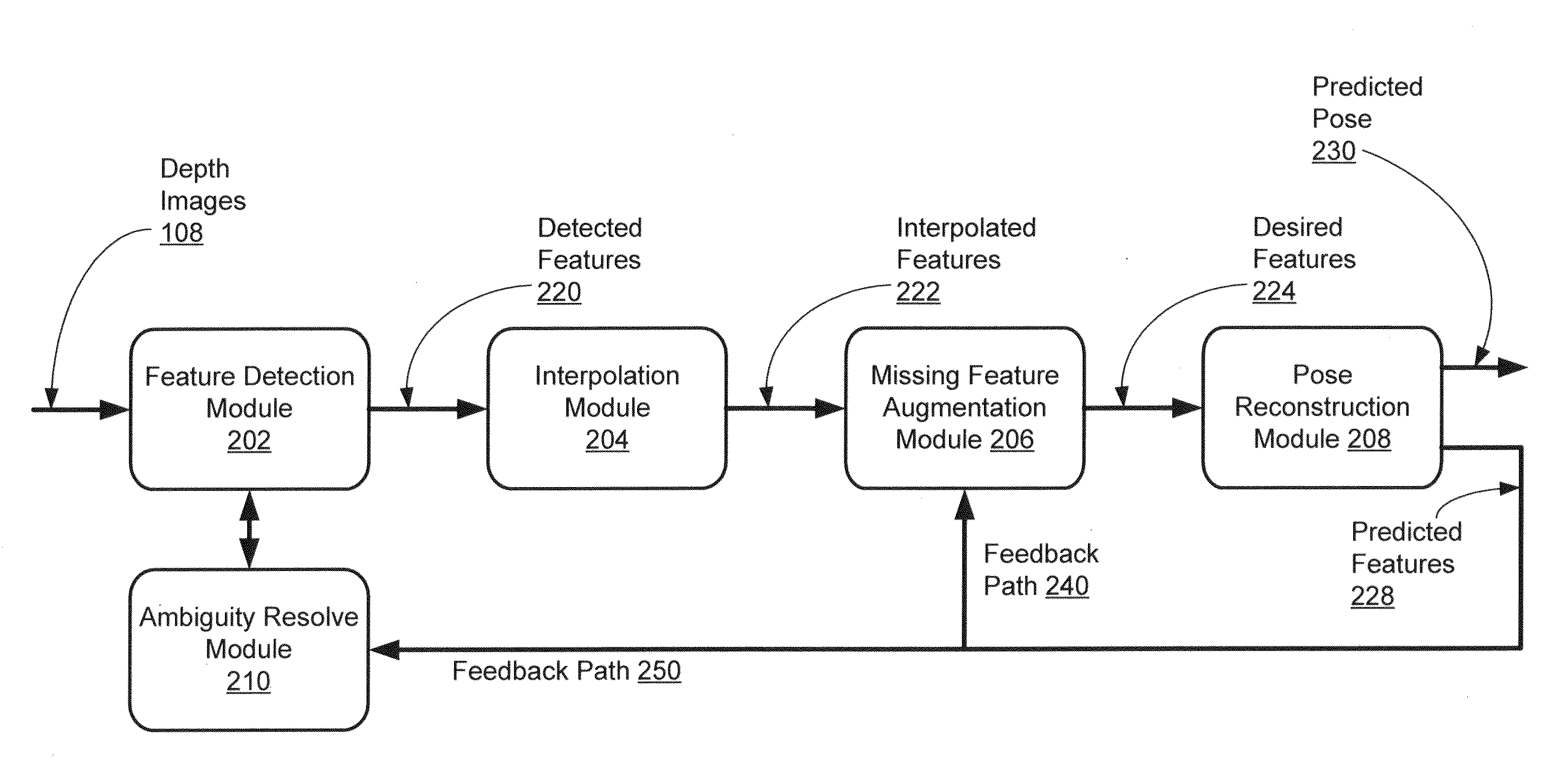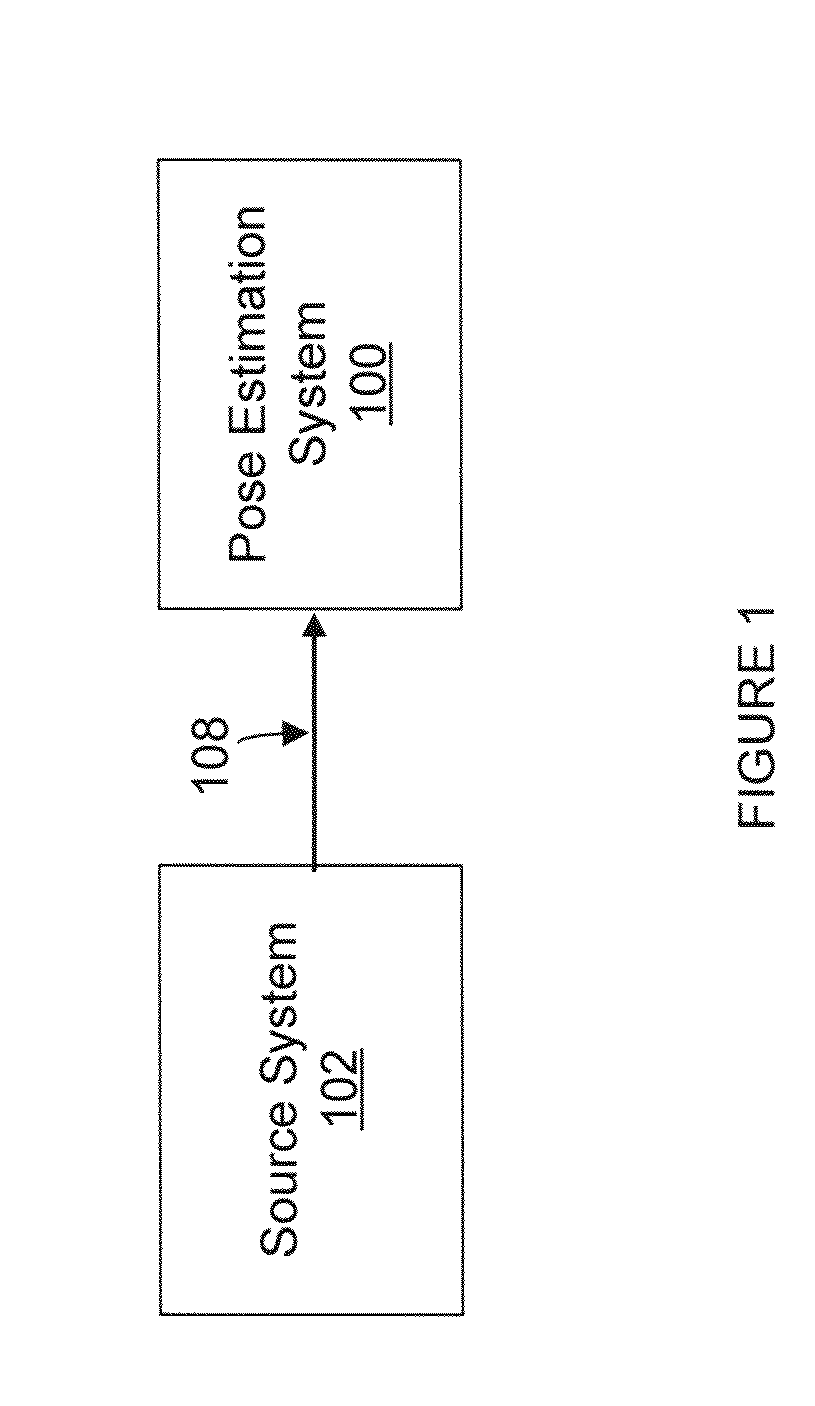Controlled human pose estimation from depth image streams
a technology of depth image and human pose, applied in the field of tracking motion of a system, can solve the problems of large number of degrees of freedom recovery, difficult problem of human pose recovery from visual observation, compounded difficulties
- Summary
- Abstract
- Description
- Claims
- Application Information
AI Technical Summary
Benefits of technology
Problems solved by technology
Method used
Image
Examples
examples
[0109]One embodiment of the disclosed human pose estimation system is tested using a single TOF camera. The human performer was instructed to face the camera and perform various complex actions involving body twists up to 40 degree rotation on either side of a front facing posture. To initialize the tracking, the performer assumes a configuration which does not result in self occlusions (for example, a T-pose) for about 1-2 seconds.
[0110]The described system can also be used to detect and track only the upper-body poses, as needed by online interactive performance for certain applications, such as human to humanoid robot motion retargeting. For additional information about the upper-body human pose tracking, see B. Dariush, M. Gienger, A. Arumbakkam, C. Goerick, Y. Zhu, and K. Fujimura; “Online and markerless motion retargeting with kinematic constraints”, Int. Conf. Intelligent Robots and Systems (IROS), pages 191-198, Nice, France (2008), the content of which is incorporated by re...
PUM
 Login to View More
Login to View More Abstract
Description
Claims
Application Information
 Login to View More
Login to View More - R&D
- Intellectual Property
- Life Sciences
- Materials
- Tech Scout
- Unparalleled Data Quality
- Higher Quality Content
- 60% Fewer Hallucinations
Browse by: Latest US Patents, China's latest patents, Technical Efficacy Thesaurus, Application Domain, Technology Topic, Popular Technical Reports.
© 2025 PatSnap. All rights reserved.Legal|Privacy policy|Modern Slavery Act Transparency Statement|Sitemap|About US| Contact US: help@patsnap.com



